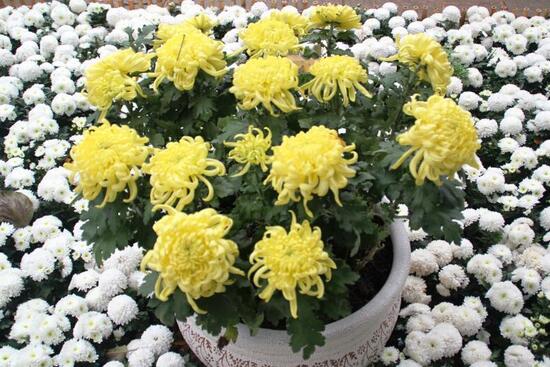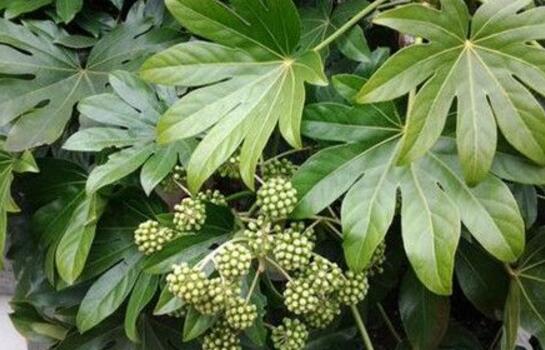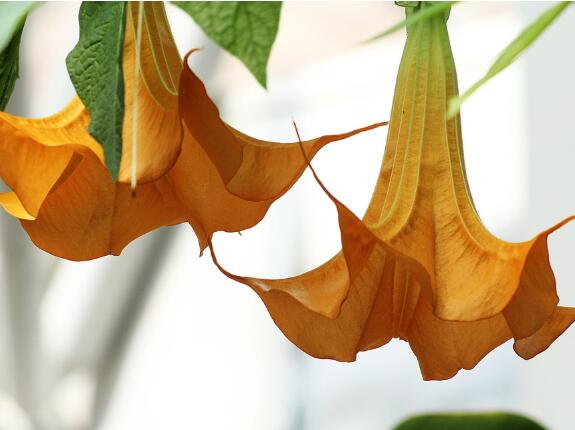How to propagate chrysanthemum, four common propagation methods / cutting ramet of chrysanthemum are the most practical
Chrysanthemum, one of the top ten famous flowers in China, is deeply loved by flower friends because of its long flowering period, bright colors and strong medicinal properties. Because chrysanthemum has many effects and functions, it is propagated in large numbers, so how do chrysanthemums reproduce? Go to the florist to buy, it is better to do it yourself, there are many ways to breed chrysanthemums, but the most practical and convenient is still cutting, the following along with the editor to understand and have a look.
First, how to propagate chrysanthemums, cutting is the most practical

Flower cultivation focuses on participation, so we should not only know how to grow chrysanthemums, but also how to reproduce chrysanthemums. According to the editor's inquiry, there are five main propagation methods of chrysanthemum: stem cutting, ramet, grafting, striping and tissue culture, of which cutting and ramet are the most practical, and we continue to look at the specific operation.
2. Propagation methods of chrysanthemum (1) Cuttage propagation of chrysanthemum
Chrysanthemum is a herbaceous flower, so unlike the hard cuttings (branch cuttings) of woody flowers such as rose, rose and gardenia, chrysanthemum uses soft cuttings (the upper part of the branch with terminal buds). The method of cutting propagation of chrysanthemum is as follows:
1. Cuttings selection
How to reproduce chrysanthemums? if it is cuttage, you must first choose the cuttings. We choose a healthy and dynamic chrysanthemum branch, then cut it off from the middle, take the upper part, and leave about 20 centimeters.
Note: in the cuttings of chrysanthemum, one leaf bud should be retained in each segment and the terminal bud should be retained in the top part. After the cuttings are selected, soak it in rooting powder solution for 2 hours.
2. Cutting substrate
According to the growth habits of chrysanthemum, we should choose the soil with a lot of humus as the cutting substrate, and watering it to make the soil moist.
3. Cuttage starts
Before cutting, use a stick to obliquely insert a hole 6-8 cm deep in the soil, then put the treated cuttings into the hole and press the soil tightly. After pressing the cuttings, spray water again, spray wet and spray through, and put them in a cool and ventilated place. In addition, we should also make an awning, cover it during the day and open it at night, spray water with a spray can on time to keep the soil moist.
4. Maintenance after insertion
As the above step, the cutting propagation of chrysanthemum is basically over, and the rest is managed after cutting. After the upper leaf buds of cuttings are born, the sun can be seen appropriately in the morning and afternoon, but can not be exposed at noon. After the chrysanthemum cuttings survive, they can be transplanted and see more sunshine, but at this time we need to control the water, watering can not be too frequent, to avoid growing too fast.
(2) the method of ramet propagation of chrysanthemum.
1. Ramet time
In China, the propagation method of chrysanthemum is widely used in ramets, which is easy to operate and reliable to survive. As for the ramet time, it is best to choose during the third month of the lunar calendar, and the heart can be removed and maintained in four months after survival.
2. Ramet method
The split method of chrysanthemum is also simple, dig out the female parent of chrysanthemum, then separate the branches with roots and plant them separately. Water thoroughly after ramet, then properly watered, topdressing after two weeks, and then normal maintenance according to the breeding method of chrysanthemum.
Generally speaking, chrysanthemum has strong vitality, such as cutting, ramet, grafting, crimping and tissue culture, but the most suitable for the majority of flower friends is cutting and ramet, so we can learn the above two, do not need to master. With regard to the breeding methods of chrysanthemum, the editor has introduced this, hoping to give you some help.
Methods and steps of Cuttage Propagation of Chrysanthemum
Chrysanthemum is cultivated by a wide variety of varieties, now the market of chrysanthemum color diversity, petal diversity, florescence multi-season, a wide range of application, so it is deeply loved by people, and it is also one of the very important cut flower varieties. The propagation methods of chrysanthemum include cutting, ramet, sowing, grafting and so on. However, in order to ensure the excellent characteristics of the female parent of chrysanthemum, chrysanthemum is often propagated by cutting.
Chrysanthemum
The cuttings of chrysanthemum generally include branch cutting, bud cutting and leaf cutting, but branch cutting is the most common. The specific cutting steps are as follows:
1. Selection of cuttings: after withering the flowers, select the strong plants free from diseases and insect pests, cut off the aboveground parts, put them in the cold room or refrigerator, and leave them as the mother plant.
2. The suitable cutting time for autumn chrysanthemum is from mid-April to early May.
3. Preparation for cuttings: after sprouting and growing into new shoots in the second spring, the tip of 7Mel 8cm was cut as cuttings, cut into horseshoe shape with a sharp knife 0.2 cm below the basal leaves, and the basal leaves were removed, leaving only 3 leaves in the upper 2mur. and cut off half of the big leaves. Put the medium in the slotting bed or basin, water it, and then cut it after the water seeps down.
4. Cutting: when cutting, first poke a small hole in the bed with a bamboo stick, insert the cuttings, the depth is the depth of the cuttings, the row spacing is 8mi 10cm, and the plant spacing is 2mi 3cm.
5. Management after insertion: the soil is pressed and watered immediately, so that the medium and cuttings are closely combined. The bed is placed in a shade and the basin is placed in the shade; always keep the soil moist, but not too wet; the temperature is kept at 15 ℃ 20 min; cuttings begin to take root a week later. Need to increase the light at this time, generally about 10 days on the basin.
The method of asexual propagation of chrysanthemum
The reproduction methods of chrysanthemum can be divided into asexual reproduction and sexual reproduction. The most important feature of asexual reproduction is that it can maintain the excellent characteristics of the female parent and blossom early. Therefore, chrysanthemums often use the method of asexual reproduction. Today, I would like to introduce the method of asexual reproduction of chrysanthemum.
Methods of asexual propagation of chrysanthemum
1. Cuttage propagation
Cutting propagation is to cut off a part of the vegetative organs of the mother plant of chrysanthemum and make use of the meristematic function or regeneration ability of the plant to make it take root and grow into a new plant under suitable conditions. There are three kinds of cutting propagation methods: branch cutting, bud cutting and leaf cutting, which have the advantages of wide application, simple and easy operation, fast rooting and high survival rate, which is the main propagation method of chrysanthemum.
(1) Branch cuttings
Branch cutting is a propagation method of cutting with tender branches of chrysanthemum, which is covered with shading film and all-light spray cutting. Shading cuttings are generally used in low temperature, mostly for introduction, chrysanthemum and cliff chrysanthemum seedlings. Full-light spray cutting has the advantages of fast rooting and high survival rate, which is generally used during mass propagation in summer, and is mostly used for raising seedlings of single chrysanthemum, multiple chrysanthemum and desk chrysanthemum.
The nursery bed should choose a place with high and dry terrain, good drainage, ventilation and light, and convenient water source, which can be made of brick or wood. The cultivation substrate can be washed with coarse river sand or metatarsal stone or perlite. The seedbed and substrate must be disinfected, soak the matrix and seedbed with potassium permanganate 4000 times solution for half an hour, then rinse once with clean water, and disinfect each time before cutting. Spray heads should be placed on the seedbed.
Cutting time: multi-headed chrysanthemum in April-May, single chrysanthemum in June-July, desk chrysanthemum in July-August, big chrysanthemum and cliff chrysanthemum in November-December.
Cuttings can be intercepted on the newly sprouted branches of the persistent roots of chrysanthemums retained last year, or on the shoots of young seedlings inserted alive last winter. The cuttings are 5 Mel 7 cm long and have 3 Mel 4 internodes. The cut is located under the node. The cut is flattened with a sharp knife and the lower 1 Mel 2 leaves are cut off. Put the cut cuttings in water temporarily, on the pre-prepared clean and loose seedbed, first punch holes in the seedbed with bamboo chopsticks, the plant spacing is 3cm, the row spacing is 5cm, then insert the cuttings into about 1cm, gently press the base with your fingers after insertion, so that the soil is closely combined with the cuttings, and water is fully watered with a spray can.
After insertion, it is managed according to the weather conditions, the number of spraying increases in sunny days, it is appropriate to keep the leaves dry, can be sprayed and stopped when it is cloudy and rainy, and pay attention to cover and prevent rain in case of rainstorm. The cuttage seedlings from April to May take root in about 25 days, and the cuttings in June to August take root in about 15 days. When the roots grow to 2 Mel 3 cm, they should be out of bed in time.
(2) Bud insertion
There are two kinds of buds available for cutting: foot buds and axillary buds. Cutting with foot buds in autumn and winter, the foot buds germinated at this time grow strong, have strong vitality and are not easy to degenerate. Foot buds cuttings are generally used for introduction and cultivation of chrysanthemum, which take root quickly and are easy to survive. Foot buds can be dug with a knife along one side of the foot buds inserted into the soil to cut off the base, can be taken out, peeled off the leaves at the base of the buds, along with cutting, about 2 cm deep into the soil, cultivation of chrysanthemum and cliff chrysanthemum can be cut with foot buds in November. Some chrysanthemum varieties lack foot buds or tender shoots during flowering, and axillary buds can also be used for cutting. axillary buds are buds growing between leaf axils, which are short and weak in shape, lack of nutrients, and need fine management. Axillary buds are easy to produce buds after cutting, and this method is not widely used.
(3) Leaf cutting
Pick the robust leaf, flatten the base of the petiole, obliquely bury the lower part of the leaf in the soil, and leave the upper part of the leaf outside. The survival rate of propagation with leaf cuttings is low and the growth is slow. Leaf cuttings are rarely used except for precious varieties or cuttings.
The management of bud and leaf cuttings is the same as that of the same branch.
2. Ramet propagation
Ramet, also known as root division, is a method of propagation by dividing the tillers germinated around the roots of the mother plant and cultivating them into new plants. This kind of root tiller seedling itself has different number of roots and stems, split from the mother plant is an independent plant, easy to survive, and can grow into robust seedlings.
After the persistent root of chrysanthemum overwintered, many tillering buds germinated in the rhizosphere. Before and after the Qingming Festival, the persistent roots of the mother plant were dug up, and these rooted tillering buds were transplanted separately, watered thoroughly and shaded properly. Slow down the seedlings and make them see the light, fertilize them, and then grow into new plants. The chrysanthemum plants propagated by individual plants are tall and branched, but the number of reproduction is small, the flowers are small, and the foot leaves fall off early. It is generally used to cultivate early chrysanthemum, big chrysanthemum and cliff chrysanthemum.
3. Striping propagation
Striping propagation is a method of making use of the rooting ability of branches to press the branches or stems of the mother plant in the soil, and then cut off from the mother plant into independent new plants after rooting, such as ring peeling and carving of the branches buried in the soil can promote rooting. This method has a very high survival rate and can maintain the characteristics of the original variety, but its disadvantages are small flower wheel, shortened branches, many branches and inconvenient management. This method is rarely used and can be used for excellent variation and ultra-dwarf plants.
4. Grafting propagation
Grafting propagation is a method of grafting branches or buds of planned breeding plants onto another plant to make them heal and grow together to become a new individual. The branch or bud used for grafting is called scion, and the plant bearing scion is called rootstock. Those who use branches as scions are called branch grafting, and those who use buds as scions are called bud grafting. Generally, scions have excellent characters, and rootstocks have strong growth and strong adaptability.
The grafting purpose of chrysanthemum is not simply for reproduction, but mainly through grafting to make chrysanthemum a multicolor, novel posture, rapid growth, rapid development, many flowers, this method is more suitable for cultivating big chrysanthemum, tower chrysanthemum and so on.
Chrysanthemum mostly uses grafting method, using Artemisia annua and Artemisia annua as rootstock, because of its strong adaptability, strong stress resistance, developed root system, exuberant growth and other advantages, it can provide rich nutrition for scion.
The specific method is as follows: select the tender tip about 5 cm long according to the plan, cut the scion base 2mur3 cm into a wedge with a sharp knife, and then truncate the rootstock stem, the thickness of the truncated part of the stem is the same as that of the scion stem, if the interception part is white, it means that the pith is white, it means that it is too tender for grafting, pay attention to the selection of the grafting site, and split the stem of the rootstock with a concentration of 2cm after removing the top. Immediately after splitting, insert the cut scion into the split of the rootstock, align and close the cambium of the scion and the rootstock, wrap it around the interface with plastic film strips, or tighten it with a "bark ring" made of willow or elm branches prepared in advance, and then put on a plastic bag to prevent moisture evaporation and Rain Water from soaking into the wound.
Remove the plastic bag after 4 days, release the binding substance after two or three weeks, and remove the Artemisia leaves from the rootstocks below the interface.
- Prev

How to reproduce star anise gold plate? the propagation method / ramet of star anise golden plate is the simplest.
Star anise is a kind of plant that is easy to feed, but before planting, we should also know how it propagates, so how does star anise reproduce scientifically? Today, let's take a detailed look at the breeding methods of three kinds of star anise gold plates.
- Next

How to propagate and how to propagate / sow / cuttage of Datura stramonium
The mandala flower is a highly ornamental plant. Although it has certain toxicity, many people still choose to breed this plant at home. With more people breeding, how to reproduce the stramonium flower has become a problem that people are more concerned about. What are the breeding methods of the stramonium flower?
Related
- Fuxing push coffee new agricultural production and marketing class: lack of small-scale processing plants
- Jujube rice field leisure farm deep ploughing Yilan for five years to create a space for organic food and play
- Nongyu Farm-A trial of organic papaya for brave women with advanced technology
- Four points for attention in the prevention and control of diseases and insect pests of edible fungi
- How to add nutrient solution to Edible Fungi
- Is there any good way to control edible fungus mites?
- Open Inoculation Technology of Edible Fungi
- Is there any clever way to use fertilizer for edible fungus in winter?
- What agents are used to kill the pathogens of edible fungi in the mushroom shed?
- Rapid drying of Edible Fungi

